Hildreth Meière Documentary Series - Watch Trailer
Hildreth Meière Documentary Series - Watch Trailer
Commissioned by: William F. SchornMedium: metalExecuted by: RambuschRelocated to: American Merchant Marine Museum

Three ships of the Good Neighbor Fleet
The S.S. Brazil, along with the S.S. Uruguay and the S.S. Argentina, initiated the Moore-McCormack Line’s Good Neighbor Fleet in 1938, offering service back and forth from New York to Latin America and South America.1 When the S.S. Brazil returned to passenger service after having been a troop transport ship during World War II, architect William F. Schorn commissioned Hildreth Meière to decorate the dining room and children’s playroom as part of the ship’s reconfiguration in 1947-48.
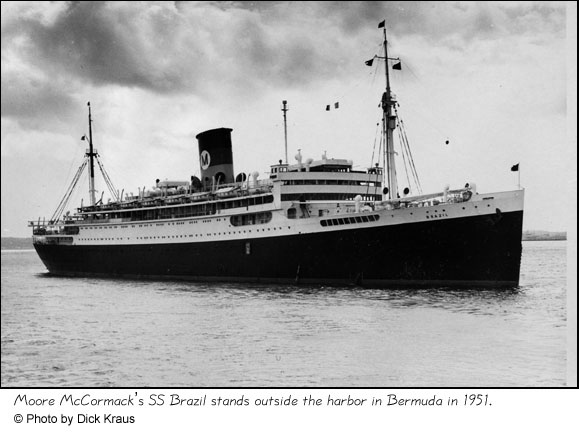
S.S. Brazil outside harbor in Bermuda, 1951. Photograph © Dick Kraus
For the dining room ceiling, Meière created a flock of nine flying metal gulls:
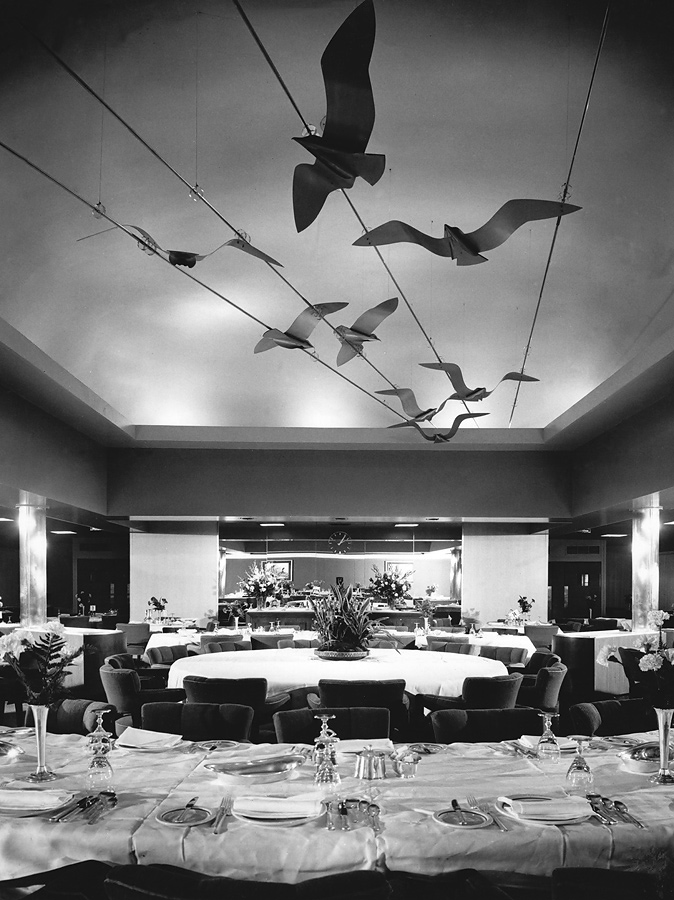
Nine metal gulls suspended from dining room ceiling
As can be seen in a prototype of one of the gulls resembling a greater crested tern, Meière originally designed them with long necks and legs attached, as if they were alighting. Meière revised her final version of the gulls so that the diners could view them as if they were flying overhead. The gulls’ necks are shorter, and their legs, which would have been hidden during flight, were removed:
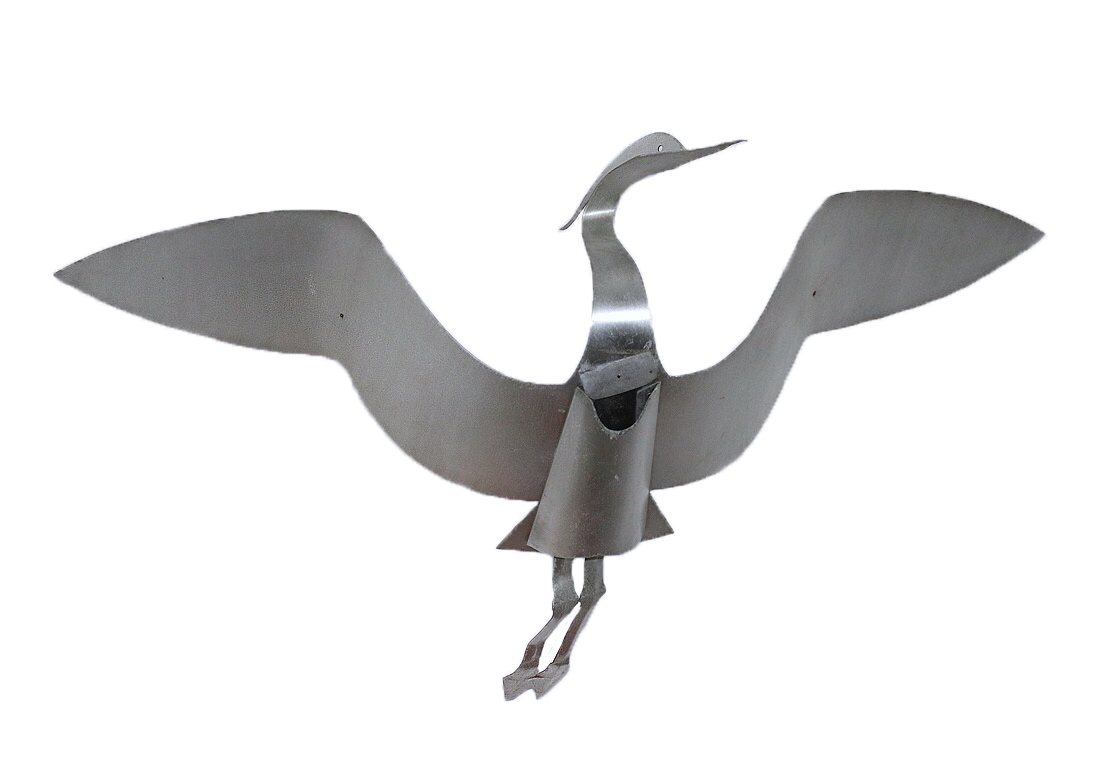
Early prototype of gull with long neck and legs
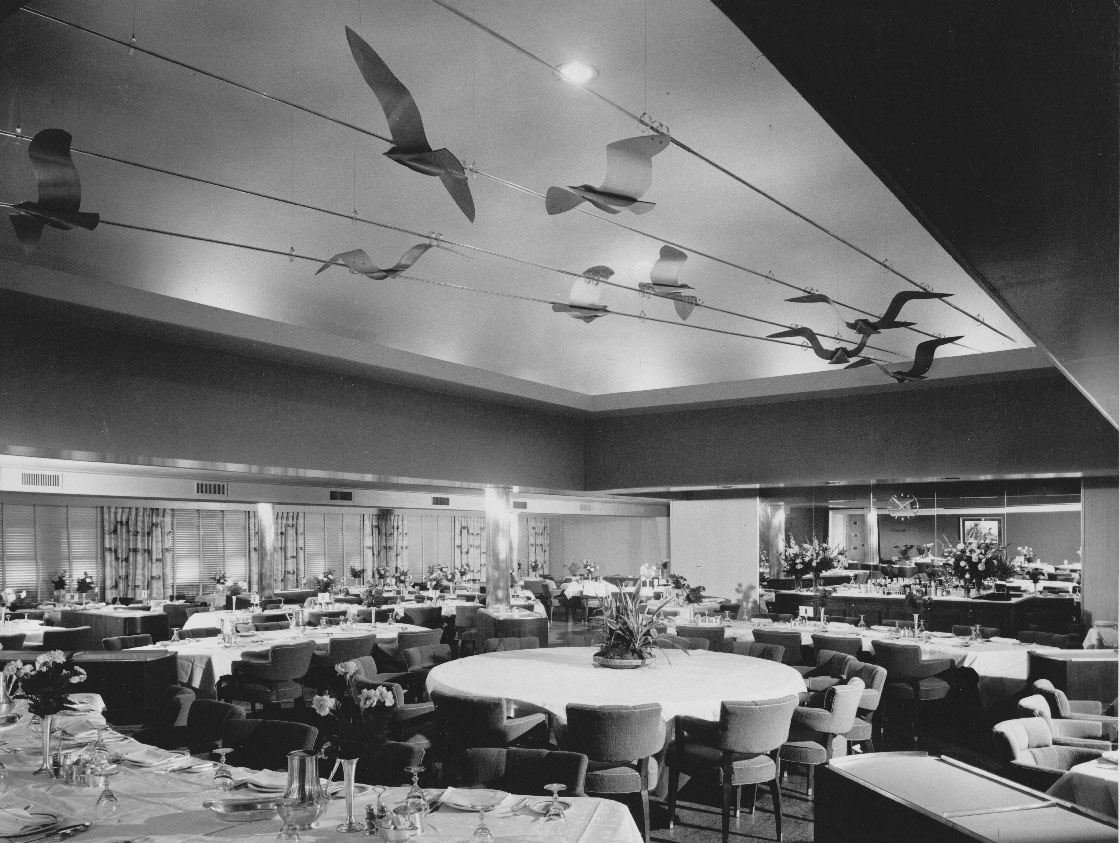
Gulls as they looked in the dining room of the S.S. Brazil
Differently spaced holes allowed Rambusch to suspend the gulls at various angles. Today the gulls are in the collection of the Merchant Marine Academy Museum in Kings Point, New York. They have been cleaned and will soon be rehung at the Academy according to Meière’s original design:
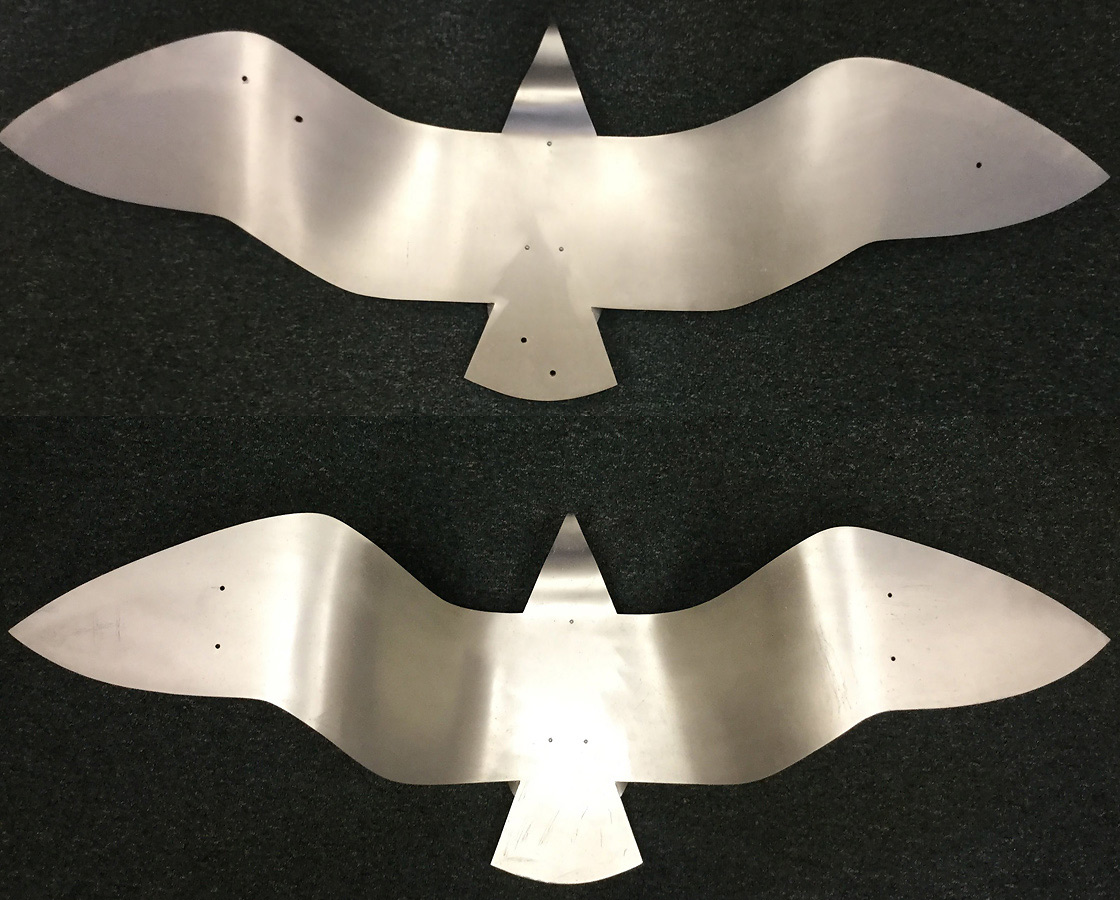
Gulls at Merchant Marine Academy Museum with asymmetrically and symmetrically placed holes for suspension
Moore-McCormack brochures described the Good Neighbor Fleet as geared toward families:
Families can enjoy these cruises. Experts trained in child care are members of each ship's personnel and keep youngsters happy and interested throughout the day. Play-rooms and play decks are a feature.2
In addition to her gulls for the dining room, Meière designed wall cut outs in painted metal from the story of Pinocchio for the children’s playroom:
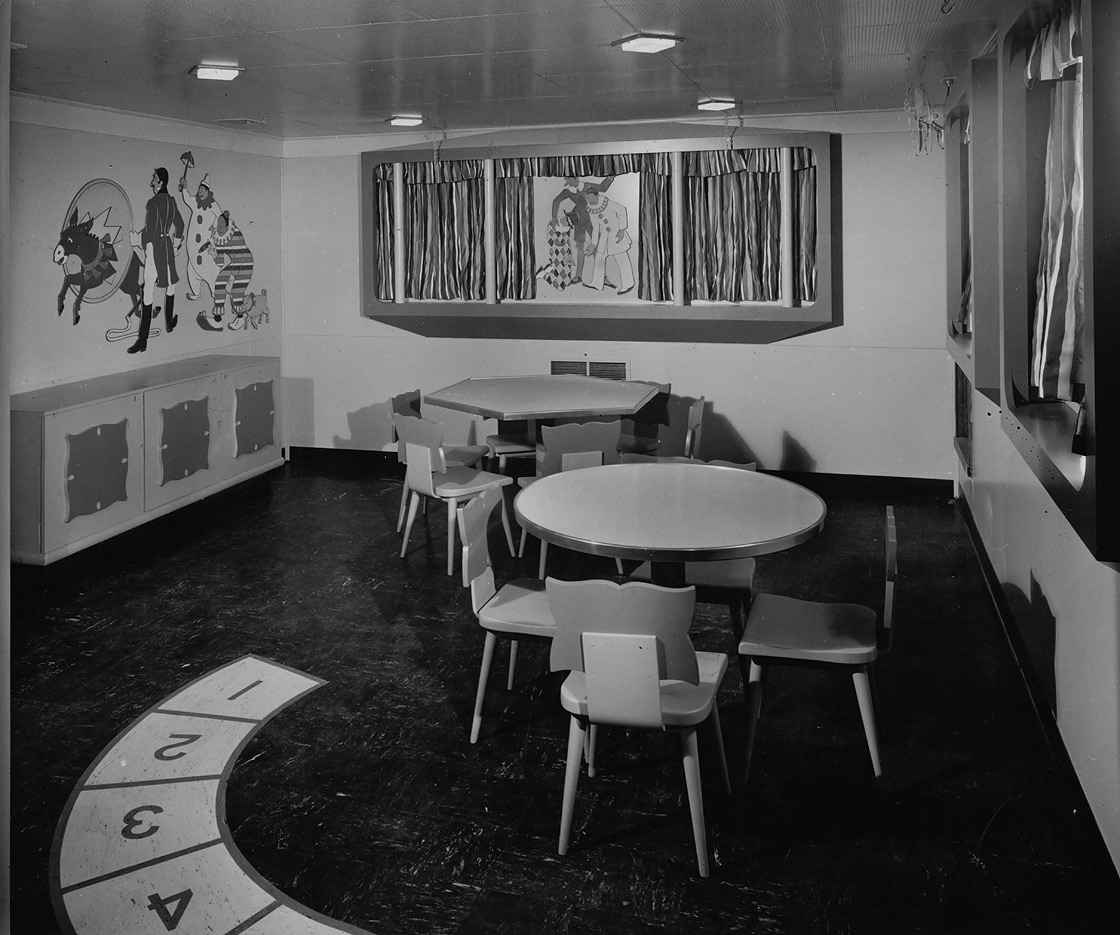
Children’s playroom with Scenes from Pinocchio on the wall

Corner of children’s playroom with Pinocchio, Fox, and Cat
Meière loved to depict narratives, and she based her designs on the original color illustrations by Attilio Mussino:3
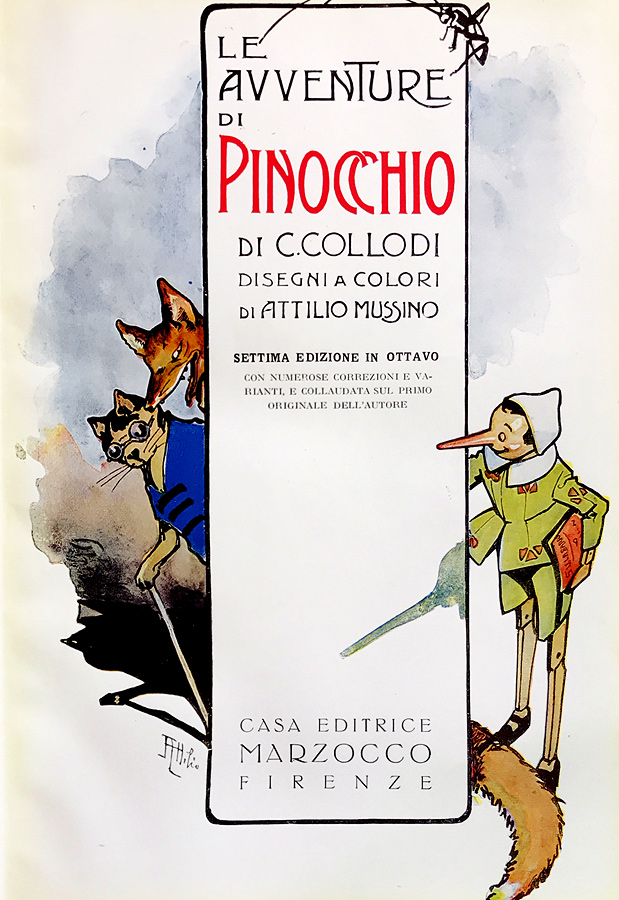
Title page of Meière’s 7th edition of Le Avventure di Pinocchio
Meière arranged her cut-out scenes randomly on paper and had them photographed before they left her studio:
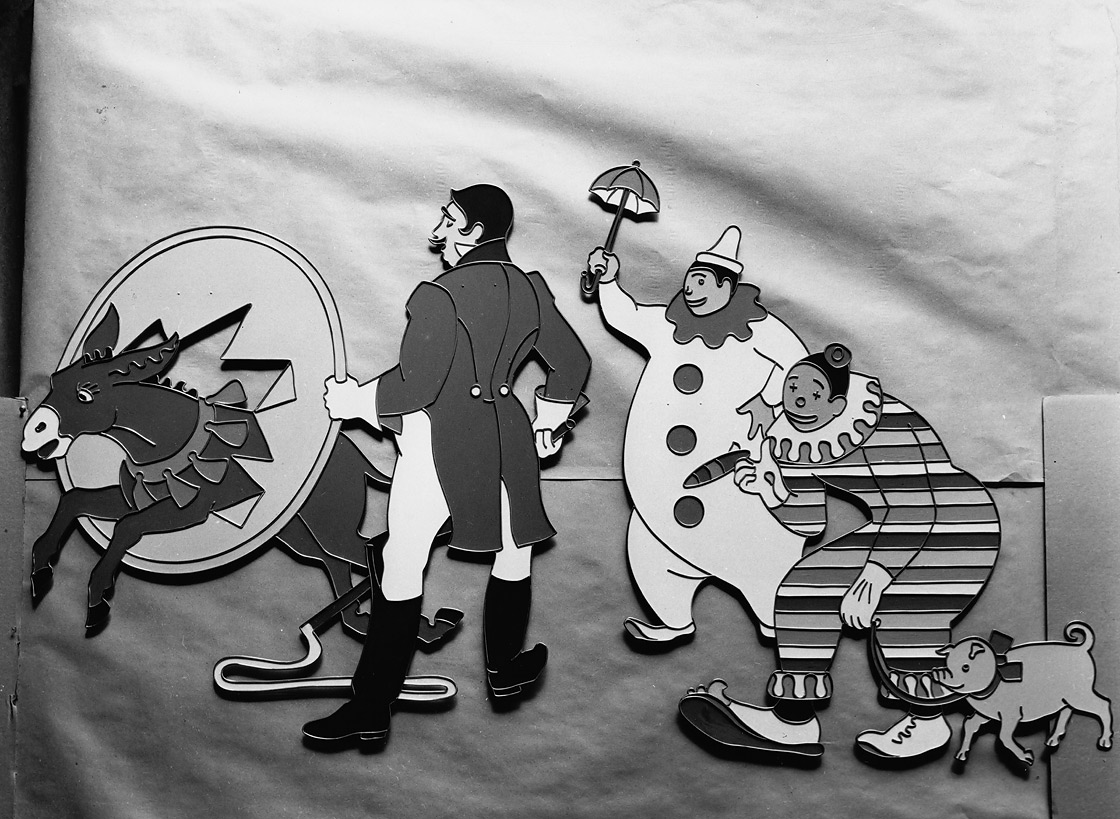
Pinocchio performs as a donkey

Pinocchio kicks Geppetto; Pinocchio views his reflection

Pinocchio meets Cat and Fox; Pinocchio talks to Snail
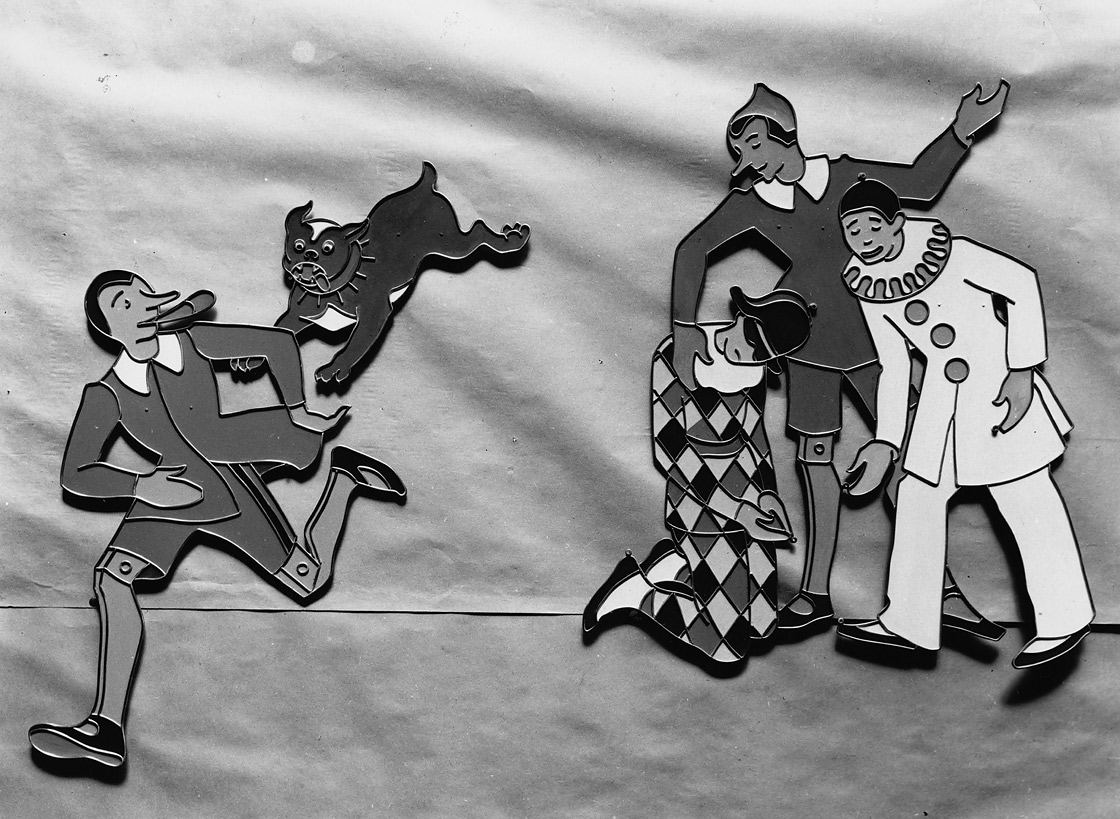
Dogfish chases Pinocchio; Pinocchio with Harlequin and Columbine
Like the gulls, Meière’s painted metal figures were executed by Rambusch. Although the gulls survived, the metal cut outs of Scenes from Pinocchio are no longer extant. They were possibly lost when the S.S. Brazil was scrapped in 1964.
Meière owned a 7th edition of Carlo Collodi’s Le Avventure di Pinocchio with color illustrations by Attilio Mussino. Carlo Collodi, Le Avventure di Pinocchio (Florence, Italy: Marzocco, 1948).
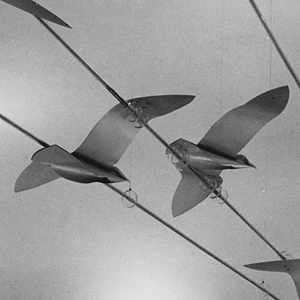
American Merchant Marine Museum
U.S. Merchant Marine Academy
300 Steamboat Road
Kings Point, NY 11024